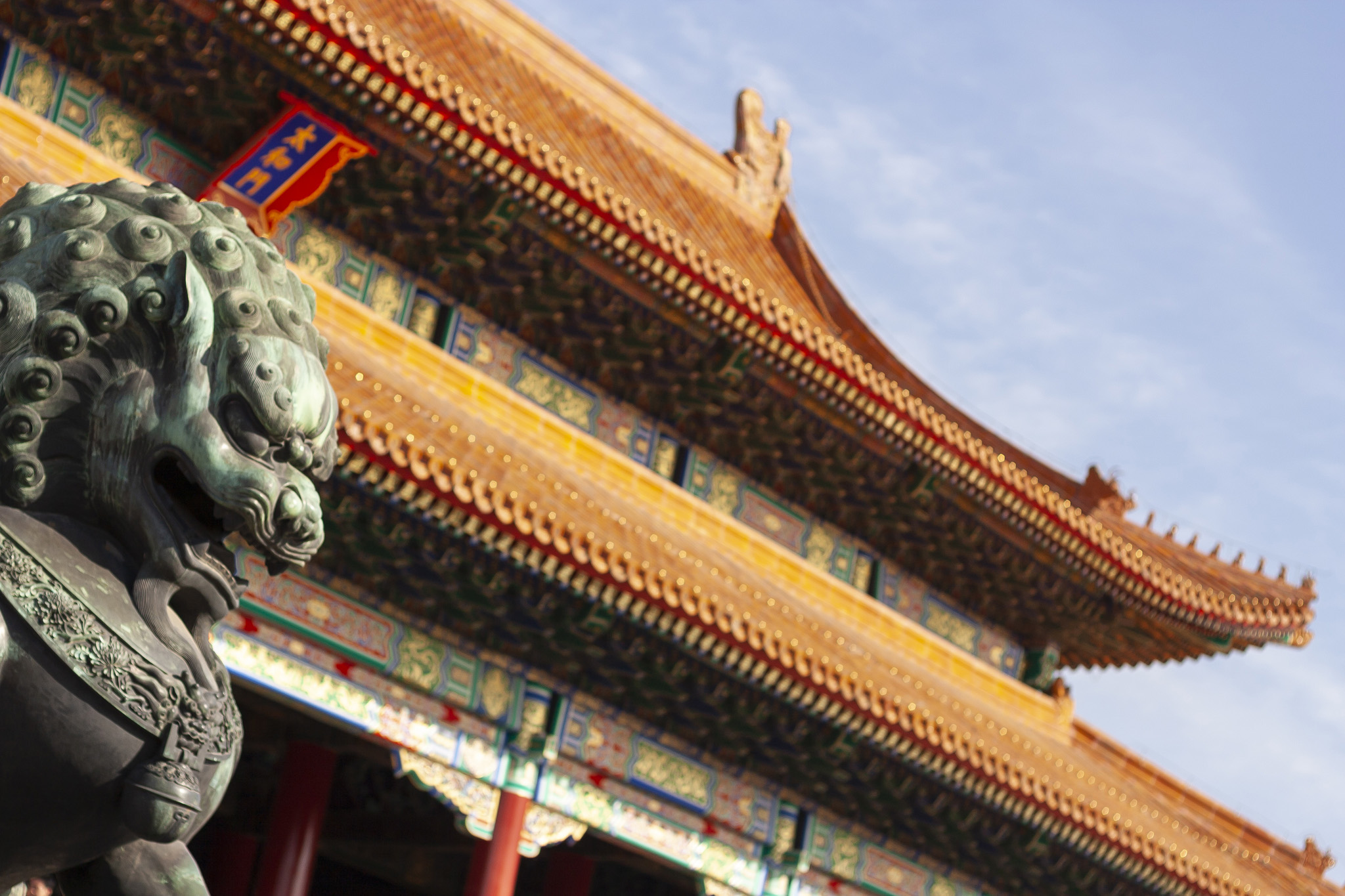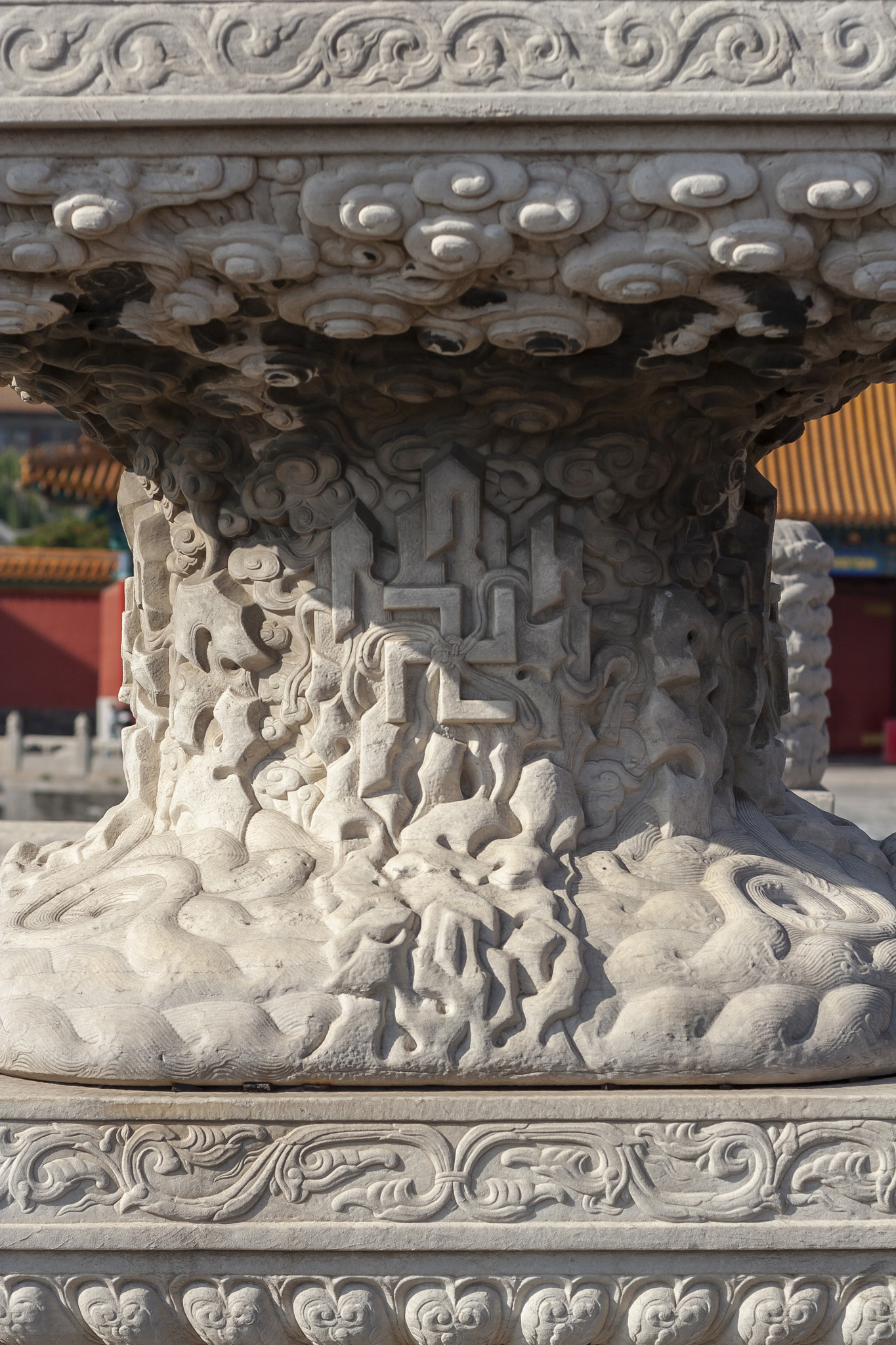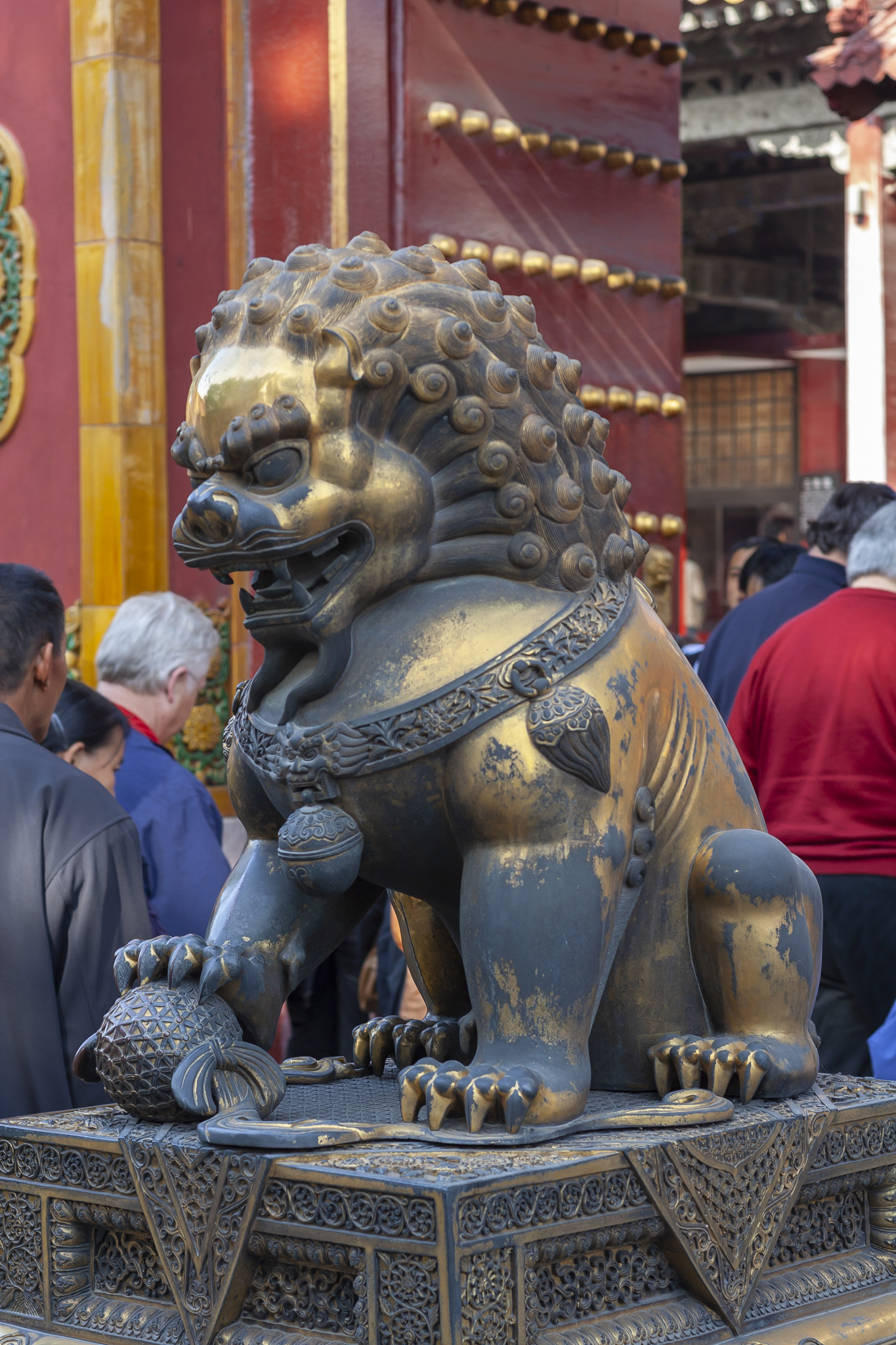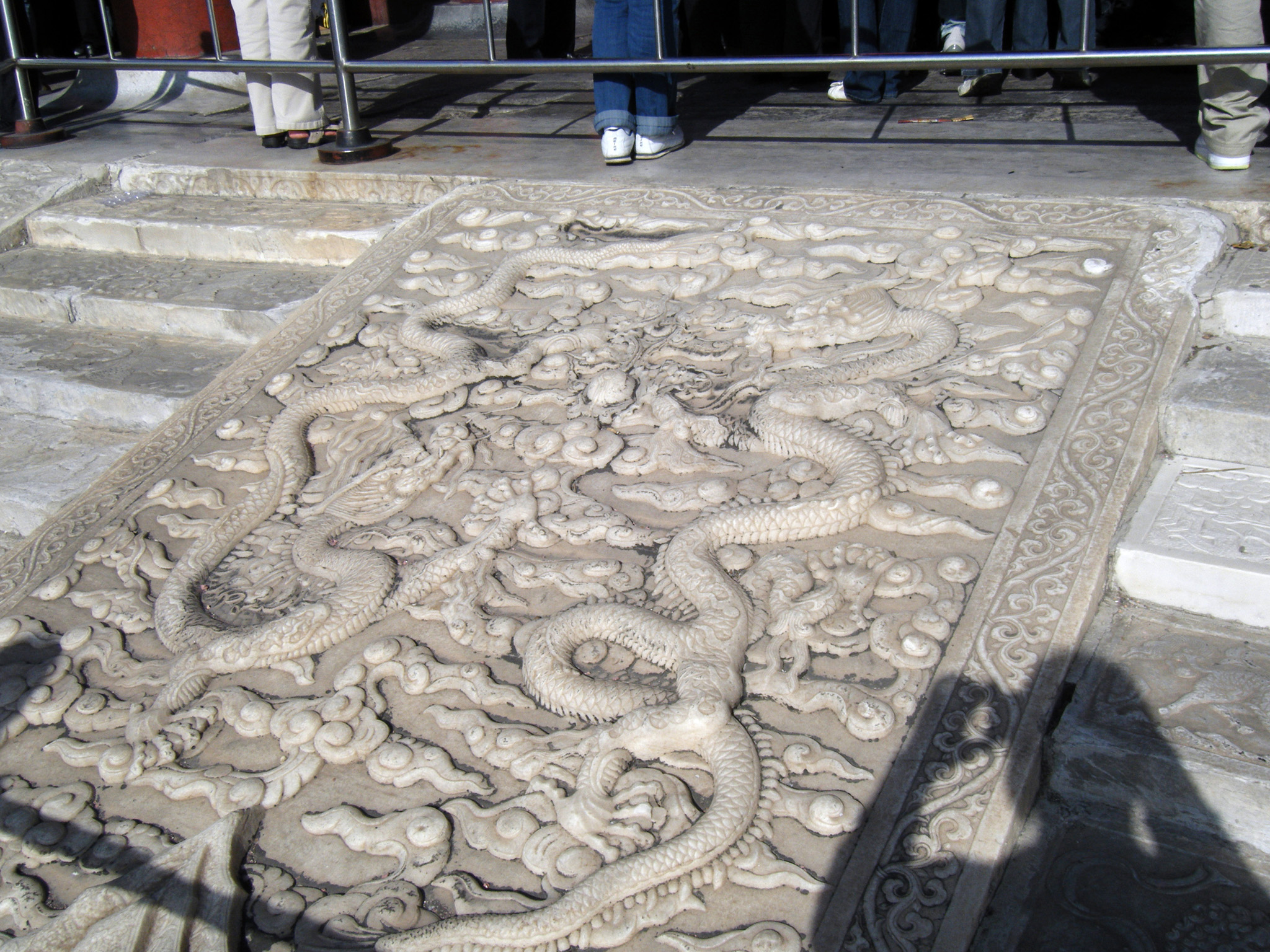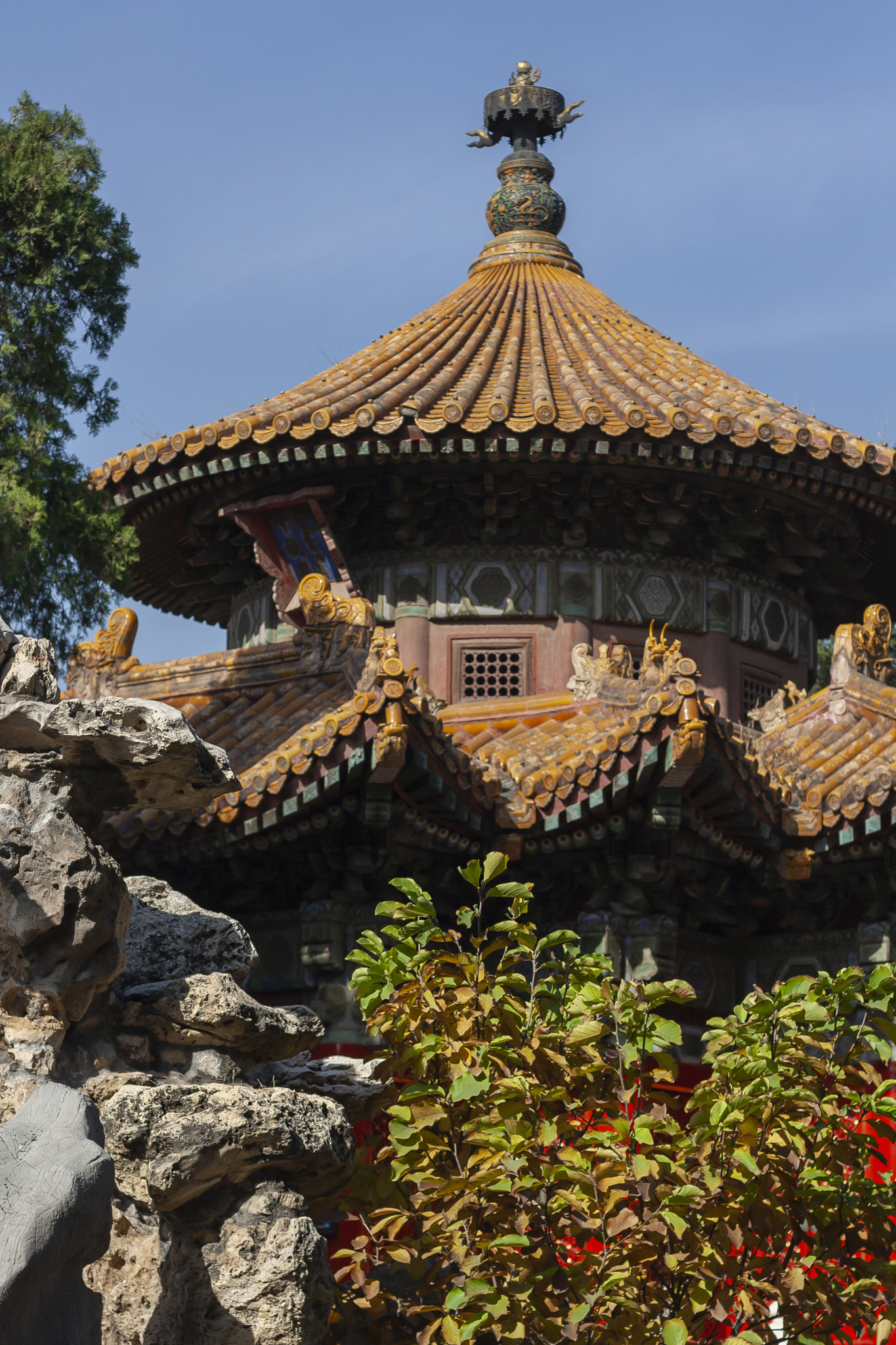The second organised activity on our penultimate day in China would be a wander through Beijing‘s Forbidden City, only a short stroll across one road from the northern end of Tiananmen Square which had been our first tourist stop and which you’ll already have read because you like reading things in sequence.
We entered through the Meridian Gate, the largest of the gates into and out of the Forbidden City. This gate comprises three central arches and two either side of them, with the centremost of the central arches being the largest and formerly reserved for the Emperor. They had big emperors back then, I’m guessing.
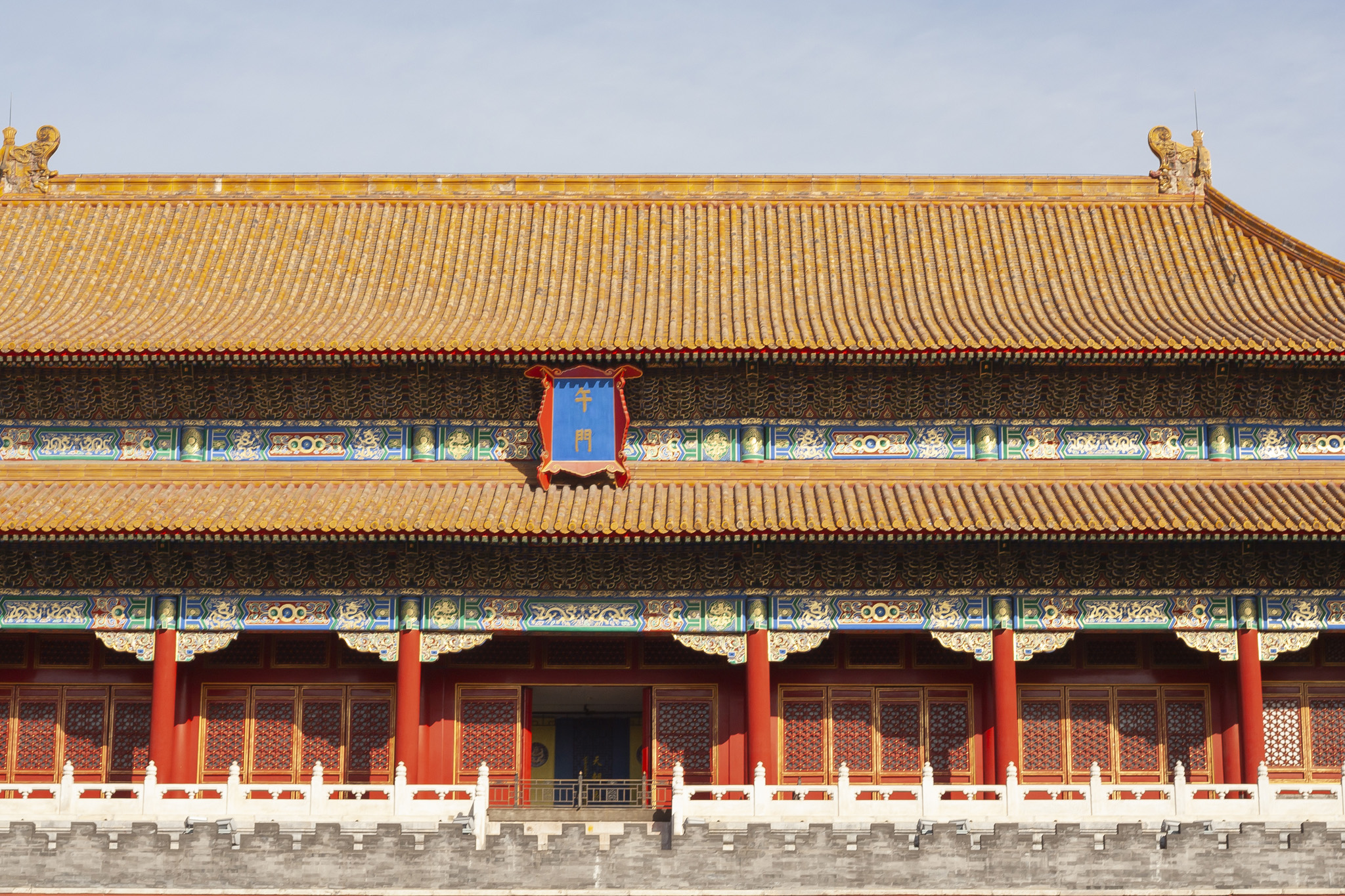


This brought us into the southern section of the Forbidden City, known as the Outer Court. The first area we found ourselves in was a large, open courtyard area with buildings left and right, a winding, artificial stream crossing the space spanned by ornately decorated bridges, and a gate with a large hall beyond it directly ahead. Naturally, this was a very popular tourist destination so the interior of the palace complex was filled with a throng of people, almost all of whom were Chinese, some undoubtedly local to the Beijing area but many, as we’d discovered on other trips, who would have come from all over China to visit the country’s capital’s historical sights.



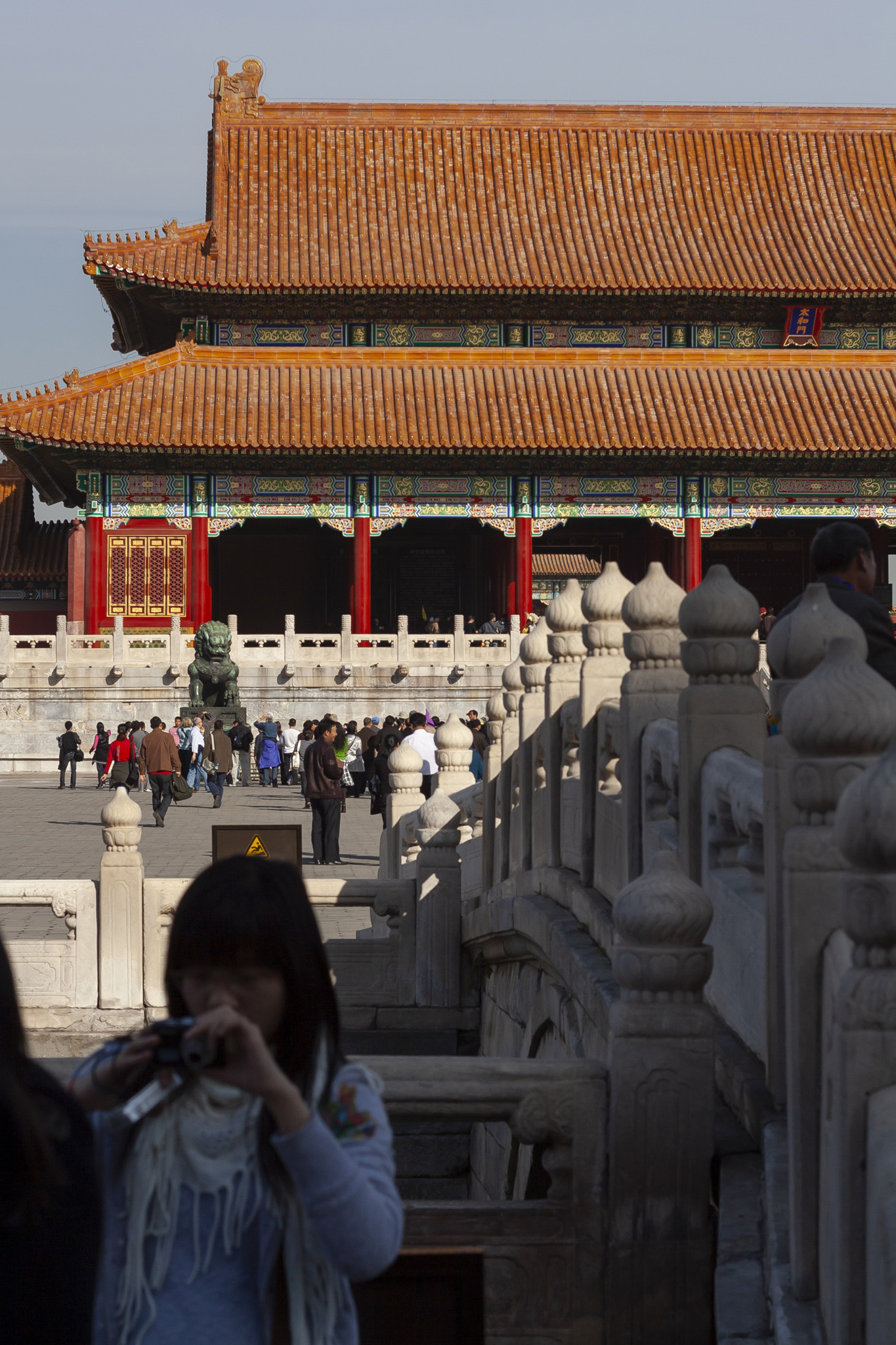


The Forbidden City was constructed between 1406 and 1420 to be the state residence of the emperor from the Ming to the Qing dynasties (until 1924). The outer walls, themselves protected by a moat, are packed earth strengthened with bricks, but the interior buildings comprise enough wood to have the complex regarded as the largest collection of preserved ancient wooden structures in the world. Those buildings number just under a thousand, with the majority of them being in the northern section of the structure. The layout of the Forbidden City roughly follows a wide central route north to south with side-routes consisting of additional halls and palaces either side, and as has already been mentioned, there is an approximately even split between the more ceremonial southern section (the Outer Court) and the more residential Inner Court in the northern portion. With only a few hours allocated, our visit to the Forbidden City would mostly see us take a direct, central route from the southern gate to the northern one.
Crossing over one of the several bridges we approached the Gate of Supreme Harmony. Although not obvious to our eyes, this gate was a later addition to the Forbidden City with the original structure having burnt down in the late 1880s and the building now present having been reconstructed in 1894. Either side of the approach to the gate were bronze lion sculptures on white marble plinths. To the left was a female lion, identified by the lion cub under her left paw and representing abundant offspring for the emperor. To the right was a male lion which had a globe under its right paw symbolising ruling the world.





We passed through the gate and into the next courtyard area which led towards the largest hall in the Forbidden City and one of the largest wooden structures in China, the Hall of Supreme Harmony. Like all wooden buildings it is susceptible to fire and needed to be rebuilt in 1697.






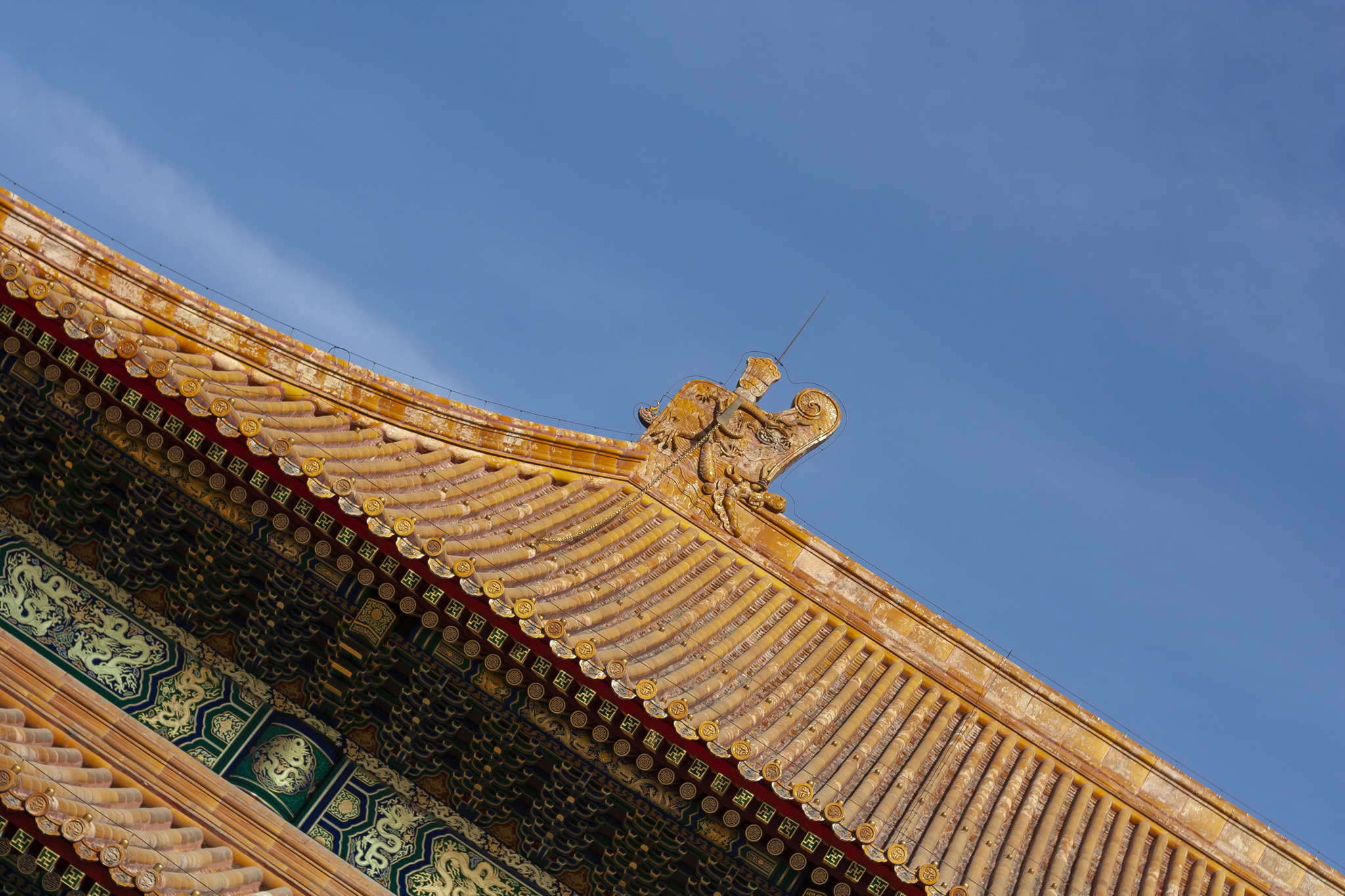
Time to draw attention to something you might or might not have spotted and which you might or might not be interested in but about which I might or might not care whether you do. Official buildings – palaces, some temples, some government buildings – were permitted to decorate the sloping edges of their roofs with lines of figurines. At the front is a man riding a phoenix while at the rear is an imperial dragon, and in-between are a number of figures, with more important buildings having more figures. The maximum number of figures is nine but the only building in China to have ten, as you can see in the photo below, is the Hall of Supreme Harmony because it housed the emperor’s throne. The tenth figurine is unique in Chinese architecture. The colour of the roof tiles is also significant as yellow was reserved for the emperor, hence nearly all the tiles in the Forbidden City being that colour.
Around the great hall were bronze sculptures of turtles and cranes, both representing longevity. These were constructed with hollow interiors in order that incense could be burned for ceremonies, with the smoke rising from the creatures’ mouths.


A symbol that caught our eyes on more than one occasion was the swastika which in Asian countries still represents longevity and divinity but which, of course, in its right-facing, tilted variation has taken on a far more unpleasant meaning in the west.
We passed through the Hall of Supreme Harmony. Some photos were taken inside but with it being a lot darker than the exterior and flash photography not being allowed and us shuffling along with the crowd in a way that made it difficult to stop, they didn’t really come out well at all, and I’m far too much of a perfectionist to share their blurry noisiness with you.
Outside, as we gathered ahead of making our way through the northern section of the Forbidden City, I panned my camera around and snapped a shot which happened to be a Chinese girl talking to a boy of a similar age. Now, the thing about my camera is, it’s noisy. That mirror snapping back for the shot can be very loud in some situations and this was obviously one because the girl spun around at the sound and faced me. For one heart-stopping moment I thought I was about to start an international incident on our very first trip abroad together but to my utter joy she flashed me a big smile and adopted a pose instead. I swung the camera back up, snapped again, we both smiled at each other, I bowed because that’s the kind of thing you do when you’re flustered, and, yes, this still remains one of my most favourite memories of all the travelling we’ve done around the world.


The next major building we came to was the Palace of Heavenly Purity which indicated that we’d crossed the imaginary line between the northern and southern sections of the Forbidden City, meaning we were now in the Inner Court of the palace complex. This was the residence of the emperor for a long period and featured twenty seven beds that were slept in at random as a security measure.




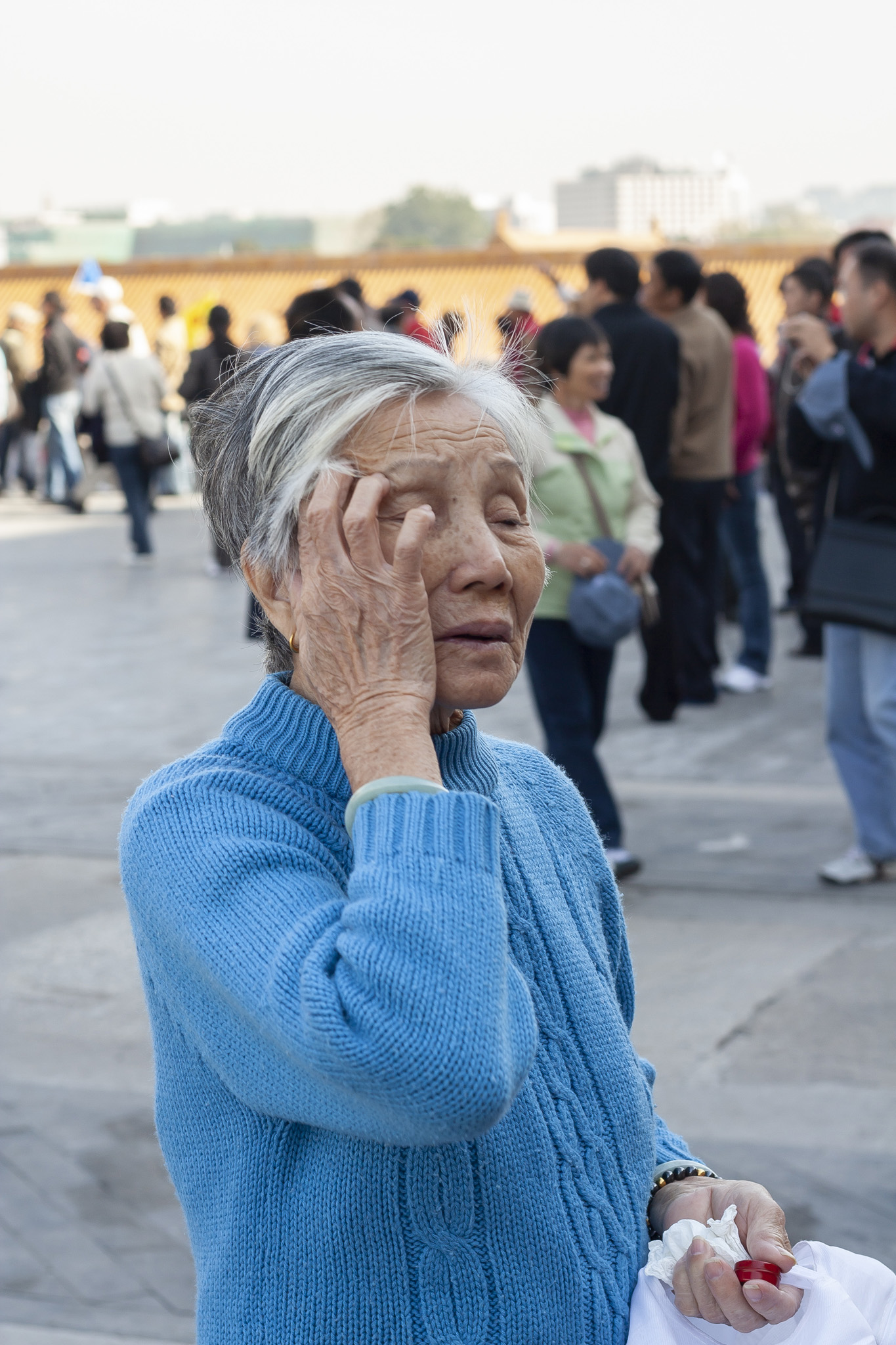

Our tour of Beijing’s Forbidden City then veered off from the direct route south-to-north to pay a quick visit to some of the buildings to the west of the Palace of Heavenly Purity. This included the Hall of Mental Cultivation in which the emperor’s bedroom was located after the tradition of picking a different bed from twenty seven every night became too tedious to follow. The open courtyards of the southern section of the complex were nowhere to be seen in this part, with narrower alleys compressing the crowd around us more, but there were plenty of opportunities to see some close-up details of the architecture and design present.







The final part of the Forbidden City we took a look at was the Imperial Garden. This was a compact space for the emperor’s family to relax in, with a number of pavilions dotted around and attractive plant-life as you can imagine (or, if you don’t fancy imagining it, as you can see below). Many of the trees in the garden are hundreds of years old and there are items that appear to be trees but which are really stone. The major pavilions represent the four seasons in one way or another.







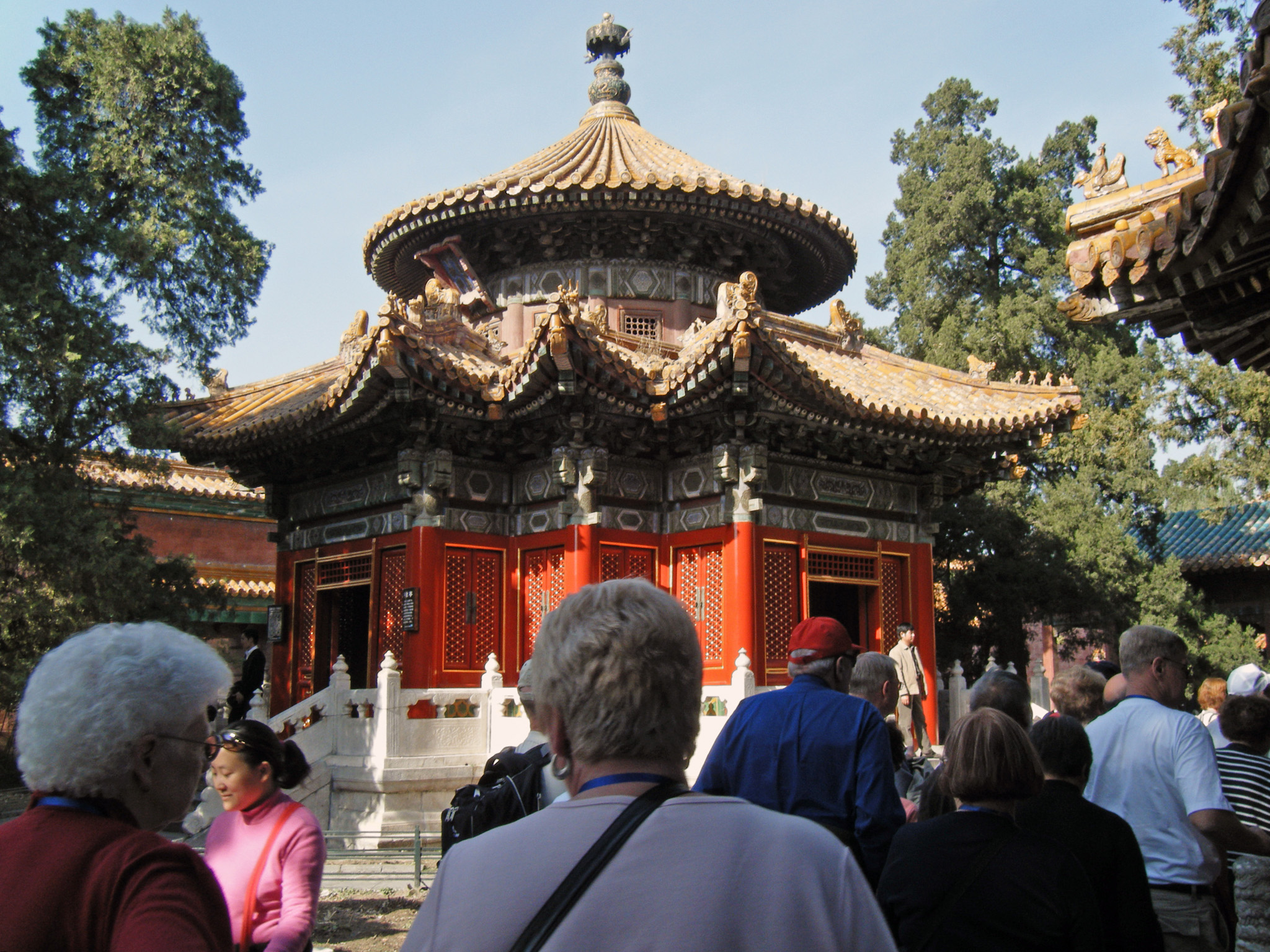
We might have had more time to explore some of the Forbidden City buildings – maybe not; we perhaps just overran our time anyway – but at this point on our excursion we were asked by the tour guide to all gather together near one wall and not move. The reason for this was that one member of our group had gone missing; an older, American gentleman. Our tour guide and the missing man’s wife headed off together and we were quite some time waiting before they returned with him in tow. Getting turned around, especially in the maze of alleys in the Inner Court wouldn’t have been too difficult so we could understand this and felt some sympathy, although that sympathy would be stretched a little over the course of this trip to Asia as he managed to get lost again on the following day and twice more while actually on the cruise ship.
All together once more we made our way from the garden and through the northern gate, the Gate of Divine Might, which offered up a lovely view of Jingshan Park. Jingshan Park was originally private gardens for the emperor but was opened to the public in 1928; its main focal point is the hill which is artificial, having been made from the soil excavated to create moats and lakes elsewhere.
After a break for lunch in a nearby restaurant the final attraction on the full day’s tour of Beijing would be a ride to the Hutongs and a visit to a local’s house.



